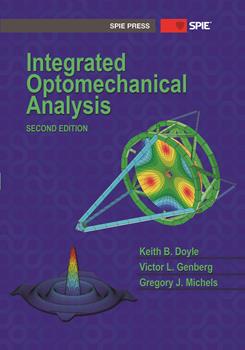|
This chapter presents guidelines relevant to finite-element-model construction and analysis methods for predicting the motion and deformation of optics. A key idea to be conveyed is that an analyst's choice of how to model optical components is dependent on several factors. The most obvious factor, of course, is that the mechanical behavior of the hardware will require that certain modeling features and methods be used in order to accurately predict a system's true behavior. However, consideration of this factor alone would lead to the construction of finite element models that capture the mechanical detail of every fillet and stress riser in the system. This approach is certainly not practical when schedule and cost constraints are prohibitive of such an effort. Fortunately, predicting most optomechanical performance metrics do not require models capable of such extensive mechanical representation. Often, only first-order mechanical behavior is needed to provide sufficient accuracy in the prediction of optical performance. Another important factor in the choice of a modeling method is how the analysis results will be used. For example, if the goal of an analysis is to compare several design concepts in the early phases of a feasibility study, then simple models that may not accurately predict the absolute behavior may nevertheless be effective in providing relative performance predictions among the various design concepts. By presenting an array of modeling methods, each with their own limitations and strengths, it is hoped that the reader becomes better able to make the best modeling decisions to meet the technical, schedule, and cost requirements of any optomechanical displacement analysis task. |
|
|


